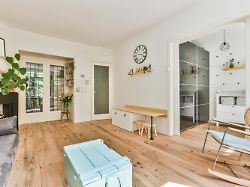More space to live
Living space is growing faster than population
07/28/2023 11:24 am
Despite the housing shortage in many cities, living space has increased faster than the population in Germany over the past ten years. For 2022, the Federal Statistical Office estimates an average apartment size of 92 square meters.
The current housing shortage in Germany is also due to people’s increased need for space. In the past ten years, the average available living space has increased faster than the population in Germany, according to figures from the Federal Statistical Office. At the end of last year, there was more living space per capita available to citizens than at the end of 2012.
At the end of the year there were 43.4 million apartments in Germany, as reported by the authority. That was 0.7 percent more than a year earlier and 6.3 percent (2.6 million apartments) more than at the end of 2012. With 295,300 new apartments, the federal government’s annual target of 400,000 new units per year was missed in 2022 as well. Increased interest and material costs are currently causing many builders to hesitate.
Since the end of 2012, living space has also increased by 7.4 percent to 4.0 billion square meters. The indicator grew faster than the population, emphasized the statisticians. The latter increased by 4.8 percent or 3.8 million to 84.4 million people during this period. At the end of 2022, the average area per apartment was 92.2 square meters and 47.4 square meters per capita. This means that the area per apartment has increased by 1.0 square meters since 2012, and the living space per inhabitant by 1.2 square meters.
More than every second apartment in apartment buildings
In Germany, a good half (52.5 percent) or 22 million apartments are in apartment buildings. On average, each of the 3.3 million apartment buildings nationwide consisted of 6.7 residential units. The 13 million single-family homes made up almost a third (31.0 percent) of the apartments in residential buildings.
15.2 percent (6.4 million) are in the 3.2 million two-family houses, another 1.3 percent in dormitories – for example for students, refugees or homeless people. In so-called non-residential buildings – such as caretaker apartments in office buildings – 3.3 percent or around 1.4 million apartments were housed.
According to the Federal Statistical Office, an average of 1.9 people lived in one apartment. Vacancies and unequal distribution of space are, however, ignored in the average view based on building statistics.
